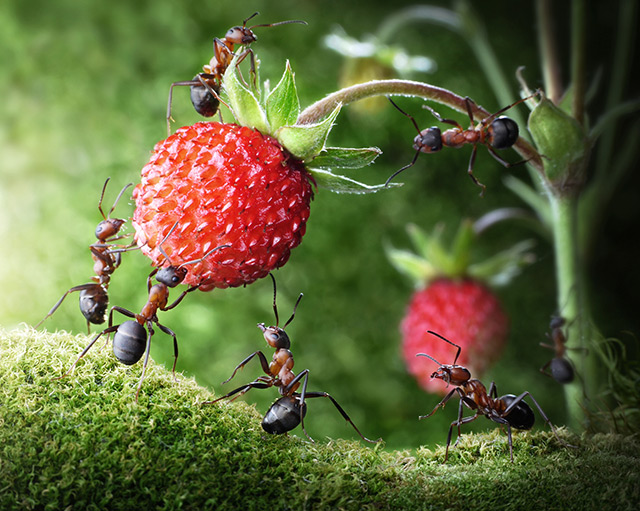
Advertisement
You have probably seen a troop of ants hauling chunks of food many times their size and weight back to their home colony. A new mathematical model developed by Israeli researchers can predict the actions the insects will adopt when they run into an obstruction while transporting that food, an article in Science Daily stated.
Researchers from the Weizmann Institute of Science (Weizmann) reported that ants will alternate between two different type of movement. Either the insects will force the food through an available opening or they will look for a path around the obstacle.
The research team published these findings in the scientific journal PLOS Computational Biology.
In order to overcome an obstacle, ants must attain an agreement on the new direction they will take. Earlier research demonstrated that ants can move from side to side in an alternating motion that lets them circumvent the problem.
Until recently, the specific prompts for this different movement behavior remained vague. (Related: Orangutan defends forest home from giant excavator ripping down trees.)
Math model shows that ant collectives will switch movement patterns to solve problems
Led by Jonathan Ron, the Weizmann researchers constructed a mathematical model for ant behavior when they are confronted by a barrier that has a small hole in it. The results of the simulations show that ants will change between the two modes of motion seemingly at random.
Sometimes, they will stay near the hole and look for a way to force the food through the passageway. Other times, they will move sideways until they come across a clear path that leads home.

The process might seem chaotic and wasteful. But switching between different modes of movement allows the ants to achieve progress over time instead of getting stuck doing one thing over and over again.
The Israeli model also theorized that ants will prefer a certain mode of motion depending on the size of the group. This is determined by the size of the food they are moving. A small group of ants will persist in forcing their small payload through the hole. In comparison, a bigger group will veer towards the sides of the obstacle.
The researchers noted the existence of “rules” that ants follow when they are moving without impediments. These rules continue to apply when they run into an obstacle like the one in the model. Yet, these same rules also enable the methods of movement adopted by the ants. The collective is able to solve the obstacle even though the individual members have not realized what the problem is.
Ant movements provide clues for other collective animal behaviors
Ron’s co-author, Ofer Feinerman, oversaw evaluations of their mathematical predictions. The researchers conducted trials involving groups of real ants bearing payloads with diameters ranging from 0.39 inches to 1.57 inches.
Each group encountered a barrier with a small hole like the one in the mathematical model. In accordance with the prediction, the ants alternated between the two methods of movement. Also as predicted, small groups with minuscule cargo preferred to stay near the hole.
“Many social animals — from bird flocks to schools of fish to troops of baboons — perform cooperative tasks, such as foraging, hunting, and migrating,” says Nir Gov, a senior author for the Weizmann study and colleague of Ron and Feinerman. “Our results could provide inspiration for similar understanding of other collective animal behavior systems that exhibit coexisting modes.”
The next step for Gov and his fellow researchers is to simulate the natural environment of food-bearing ants. They will study the movement of the insects as the latter cross shifting terrain littered with various kinds of obstructions.
Learn more facts about the collective behavior of ants and other insects at Ecology.news.
Sources include:
Submit a correction >>
This article may contain statements that reflect the opinion of the author
Advertisement
Advertisements















